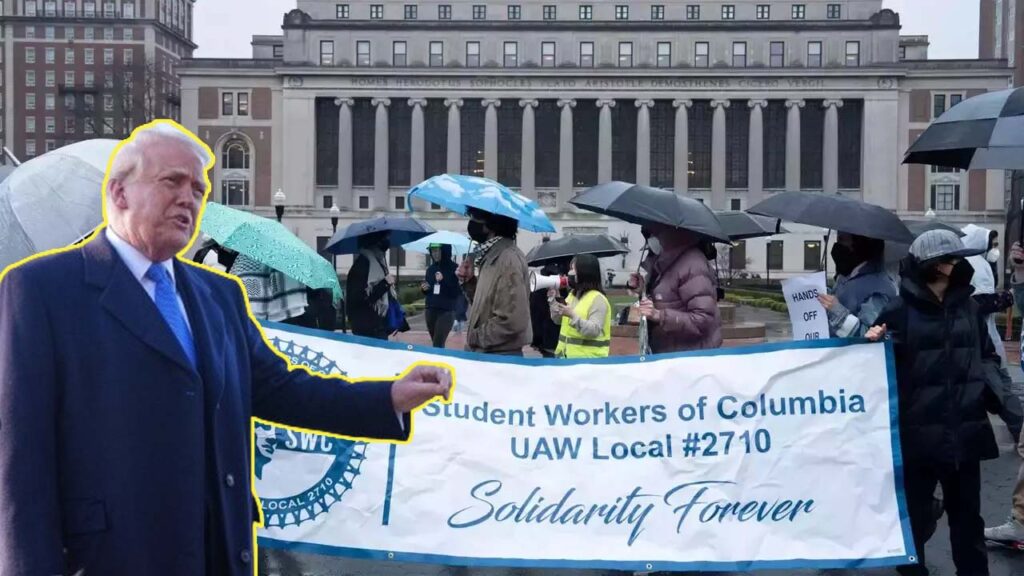
- The Trump administration had threatened to withhold $400 million in federal funding unless Columbia addressed specific demands, particularly related to the way it handled pro-Palestinian protests on campus.
- The administration believed that universities were becoming hotbeds of political activism and, in this case, were seen as supportive of pro-Palestinian movements, which the administration viewed as problematic.
- Experts in higher education have pointed to the increasing politicization of university leadership as a key issue moving forward.
- Ultimately, Columbia’s leadership change is a sign of a much larger issue: the increasing influence of political forces in higher education in the US.
Columbia University’s recent leadership change has been a topic of significant discussion, not just in the education sector but across broader political and societal landscapes. After intense pressure from the Trump administration, Interim President Katrina Armstrong’s resignation has brought the intersection of politics and higher education to the forefront. The administration had threatened to withhold $400 million in federal funding unless Columbia addressed specific demands, particularly related to the way it handled pro-Palestinian protests on campus. This situation has sparked questions about how much influence political forces should have over university decisions and whether that compromises the values academic institutions should uphold, especially regarding academic freedom.
To understand the seriousness of this, it’s essential to look at the broader context. The Trump administration’s stance toward Columbia University wasn’t just about one university. It reflected a larger political agenda targeting universities for handling student protests and activism, particularly those related to the Israeli-Palestinian conflict. For the Trump administration, this was about sending a message to all universities: the academic world, especially on campuses where protests were growing in prominence, had become too politicized. The administration believed that universities were becoming hotbeds of political activism and, in this case, were seen as supportive of pro-Palestinian movements, which the administration viewed as problematic.
However, it’s also important to acknowledge that Columbia, like many other universities, wasn’t precisely neutral in political matters during the previous administration. Under President Joe Biden’s leadership, universities like Columbia often aligned more closely with the progressive policies coming from the White House. Critics from all sides, including some within the university community, argued that universities had begun to lean too heavily into the political climate of the day, often pandering to the dominant political narratives of the moment. This gave the impression that institutions should be spaces for independent thought and become politically charged environments.
Interestingly, the debate around Columbia’s handling of political issues didn’t just come from one side of the political spectrum. There were also voices from within the university community, faculty, alumni, and even some students who objected to how the university navigated these political pressures. These critics, who were not necessarily politically motivated, expressed concern that the university prioritized political alignment over its core mission: to foster academic independence and intellectual curiosity. They argued that when universities start making decisions based on political considerations, whether appeasing the Trump administration or aligning with the Biden administration, they undermine their ability to be true centers of learning, where diverse viewpoints can be expressed without fear of reprisal.
The resignation of Columbia University’s interim president Katrina Armstrong and the appointment of Claire Shipman, a trustee of Columbia, as the new president is the third leadership change at the university in just a few months. This type of instability is unsettling for any institution. It creates an environment of uncertainty, and for the students, faculty, and staff, it raises questions about the university’s ability to maintain continuity and stability, which are key to long-term academic planning and progress. As the university works through this leadership transition, it has to confront the political pressures from the Trump administration and broader questions about its role in the political landscape.
Experts in higher education have pointed to the increasing politicization of university leadership as a key issue moving forward. Dr. Sarah Williams, an expert in this field, said, “Universities are no longer just places for academic freedom; they’re increasingly seen as political entities. The challenge is finding a balance between political pressures and academic independence.” This challenge, as the situation at Columbia shows, isn’t just hypothetical; it’s a real issue that universities must navigate as they try to stay true to their missions in a polarized political climate.
The immediate effects of Armstrong’s resignation and the new leadership transition are already being felt. However, the bigger question is how this moment will shape the future of universities nationwide. If political pressures continue to push universities to prioritize political alignment over academic freedom, we may see a shift in how higher education operates. What happens if universities begin to prioritize the political leanings of donors, administrations, or governments over the value of intellectual diversity? It could fundamentally change the landscape of higher education, where open debate, free expression, and the exchange of differing viewpoints are replaced with ideological conformity.
The long-term impact could be far-reaching. If political pressures become more widespread in higher education, universities may narrow the range of ideas to explore and discuss. Students and faculty could feel pressured to self-censor or align with the prevailing political sentiment, ultimately limiting the core values of higher education. What universities have long been known for as places where critical thinking, diverse perspectives, and a commitment to free inquiry flourish could be at risk.
Ultimately, Columbia’s leadership change is a sign of a much larger issue: the increasing influence of political forces in higher education. This shift could have significant implications for the future of academic institutions. If universities continue to bow to political pressure, they may lose sight of their original mission to be places of free thought and intellectual exploration. The stakes are high, and as Columbia’s experience shows, the path forward won’t be easy. Universities must find a way to maintain their independence and protect their core values in an increasingly polarized world.
Sakshi Yadav is pursuing a Master’s Degree in International Studies from Christ University, Bangalore. Her research areas include International Political Economy, South Asia, South Pacific and U.S. Foreign Policy. Views expressed are the author’s own.
